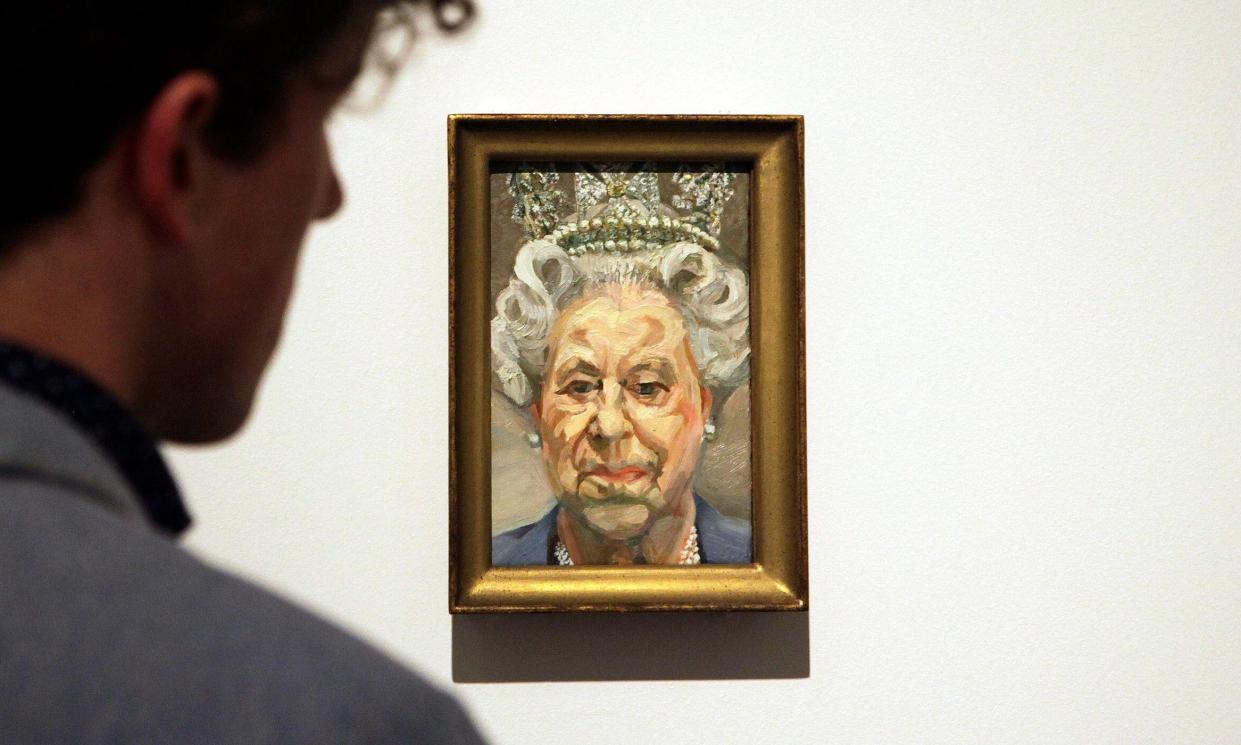Portrait of Queen ‘looking like a corgi’ to feature in Lucian Freud exhibition

It was hailed by the Guardian as the finest royal portrait for 150 years. Others thought it made the Queen look like a rugby prop forward or one of her corgis.
More than two decades since it was revealed to a blizzard of praise and derision, Lucian Freud’s portrait of Queen Elizabeth II will get people talking once more when it features in a National Gallery exhibition next year.
On Thursday the gallery revealed details of what it said would be a landmark show to mark the centenary of Freud’s birth.
The portrait, which the Queen is lending from the royal collection, will be one of more than 60 loans from museums and private collections around the world for an exhibition examining how Freud’s practice changed over time.
The show will bring together his most important works from a career that spanned seven decades. The National Gallery said the aim was “to present new perspectives on Freud’s art, focusing on his tireless and ever-searching commitment to the medium of painting”.
Freud delivered his portrait to the Queen in person. According to the second and final volume of William Feaver’s biography of the painter, published last year, the Queen did not say what she thought of it but seemed very pleased. She said to Freud: “Very nice of you to do this. I’ve very much enjoyed watching you mix your colours.”
The press reaction was not so guarded. One critic thought she looked like a prop forward with six o’clock shadow on her chin.
The Sun’s front-page headline was: “It’s a Travesty Your Majesty.” It sought reaction from Robin Simon, the editor of the British Art Journal, who said: “It makes her look like one of her corgis who has suffered a stroke. It is a huge error for Lucian Freud. He has gone a portrait too far.”
There was a similar reaction in other sections of the press, but not everywhere. The Guardian’s Adrian Searle compared it to a Richard Nixon joke mask, or perhaps “the ‘before’ half of a before-and-after testimonial for constipation tablets”, but he also loved it.
“This is the only painted portrait of the Queen, or any other member of the current royal family, of any artistic or indeed human merit whatsoever,” he wrote. “It is probably the best royal portrait of any royal anywhere for at least 150 years.”
The portrait may have been mocked, but it has always been held in high regard by curators. Along with works by Andy Warhol and Annie Leibovitz, it was a highlight of a diamond jubilee show of portraits of the Queen at Windsor Castle in 2012.
Daniel F Herrmann, curator of the forthcoming National Gallery show, said the painting was an important one, with Freud positioning himself in the tradition of court artists through history.
“It is a fascinating portrait and it comes from a painter who always had an interest in looking at the powerful just as much as he looked at everyday life. He painted Her Majesty the Queen; he also painted portraits of bookies and rogues. He painted portraits of his own mother.”
A painting of Freud’s mother, documented at the end of her life, will feature in the exhibition. Early works will include Girl with Roses, from the British Council collection, while mid-career works will include Reflection with Two Children (Self-Portrait), on loan from the Thyssen-Bornemisza museum in Madrid.
The show will culminate in some of his late monumental nude portraits where Freud revelled in the representation of the human form.
Herrmann said the show would examine why his paintings remained so relevant. “He was one of the most important figurative painters in the world and he continues to inspire artists today.”
He hopes visitors will want to take a slow, intense look at the works on show. “What we all need at the moment is for things to slow down, for us to take a good hard look at the world around us. Honest looking is something Freud did in his own work.
“We want people to look at his work, to understand how he operated, why he was exciting and how his painting changes over time.”
Freud, who died in 2011 at the age of 88, always had a close association with the National Gallery and was a regular visitor throughout his life.
“I use the gallery as if it were a doctor,” Freud told the journalist Michael Kimmelman. “I come for ideas and help – to look at situations within paintings, rather than whole paintings. Often these situations have to do with arms and legs, so the medical analogy is actually right.”
Lucian Freud: New Perspectives is at the National Gallery from 1 October 2022 to 22 January 2023.

 Yahoo News
Yahoo News 
